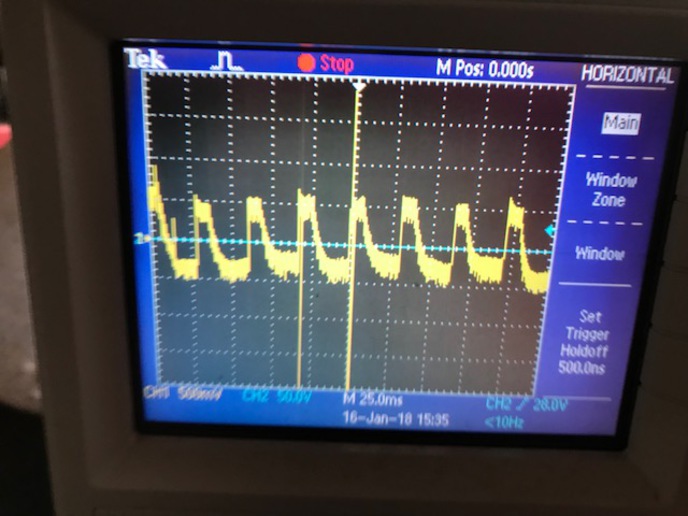Hi everyone. The electrical system on my Ford had been working great for years. It is 12V with a Pertronix 1244A ignition and 12 V coil. A few days ago, my alternator (Delco 10-SI) failed after the
bearings went out, so I bought a new one, re manufactured. I simply removed and replaced the alternator, exactly how it was before. The wiring has only a single wire: the battery stud on the alternator to
the ammeter. The plug on the alternator (i.e. #1 and #2 pins) were not used.
Upon starting, I found that the new alternator was not charging the battery, even when I increased the RPMs (normally, I have to increase the RPMs to get it to start charging). After some research, I
decided to "excite" the alternator by jumping a wire from the #2 pin on the alternator to the battery stud on the alternator, without the motor running. This gave a very small spark. At that point, my plan
was to start it up, and then jumper the #1 pin to the same alternator battery stud. Problem is that it will not fire. The coil is fine (3 ohms), but the pertronix ignition is not working (no spark). I only
have 1.3 V at the coil when the coil is hooked up to the pertronix igntion. When I disconnect the pertronix ignition from the coil, I have 12 V at the coil again. So it seems that the pertronix ignition is
fried and I must purchase a new one. I did not leave the switch on.
Did I fry the pertronix ignition with the new alternator or the jumper wire? Please help, I just don't want to fry a brand new ignition! And now it is snowing and I need to plow.
Thanks!
Chad
bearings went out, so I bought a new one, re manufactured. I simply removed and replaced the alternator, exactly how it was before. The wiring has only a single wire: the battery stud on the alternator to
the ammeter. The plug on the alternator (i.e. #1 and #2 pins) were not used.
Upon starting, I found that the new alternator was not charging the battery, even when I increased the RPMs (normally, I have to increase the RPMs to get it to start charging). After some research, I
decided to "excite" the alternator by jumping a wire from the #2 pin on the alternator to the battery stud on the alternator, without the motor running. This gave a very small spark. At that point, my plan
was to start it up, and then jumper the #1 pin to the same alternator battery stud. Problem is that it will not fire. The coil is fine (3 ohms), but the pertronix ignition is not working (no spark). I only
have 1.3 V at the coil when the coil is hooked up to the pertronix igntion. When I disconnect the pertronix ignition from the coil, I have 12 V at the coil again. So it seems that the pertronix ignition is
fried and I must purchase a new one. I did not leave the switch on.
Did I fry the pertronix ignition with the new alternator or the jumper wire? Please help, I just don't want to fry a brand new ignition! And now it is snowing and I need to plow.
Thanks!
Chad


